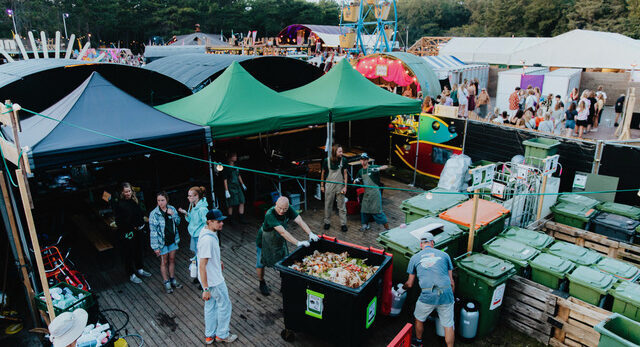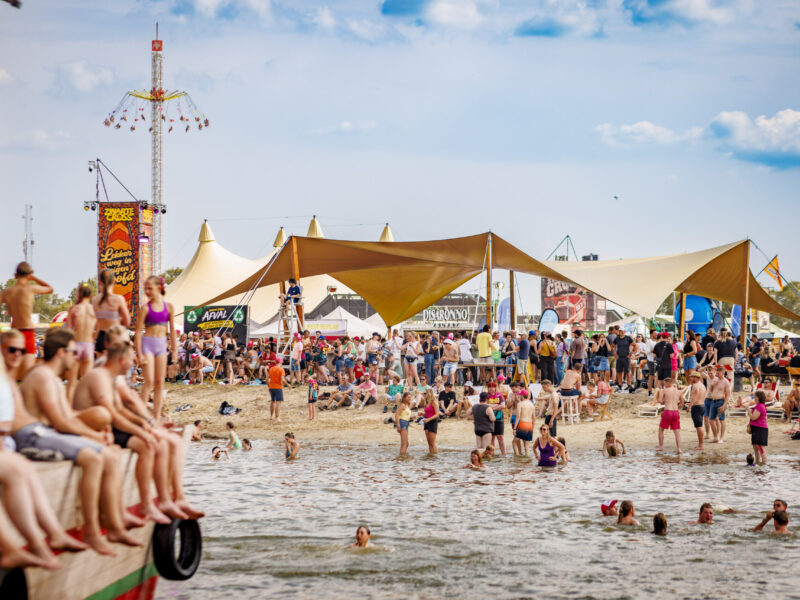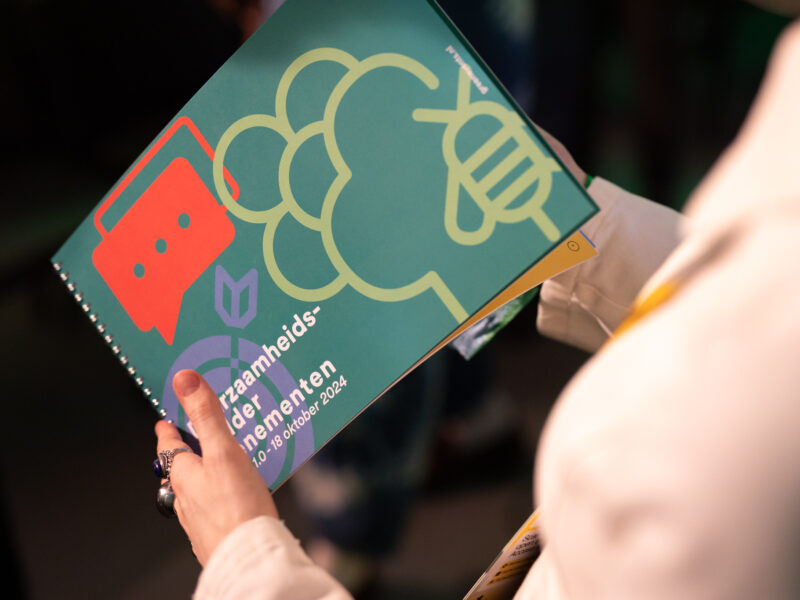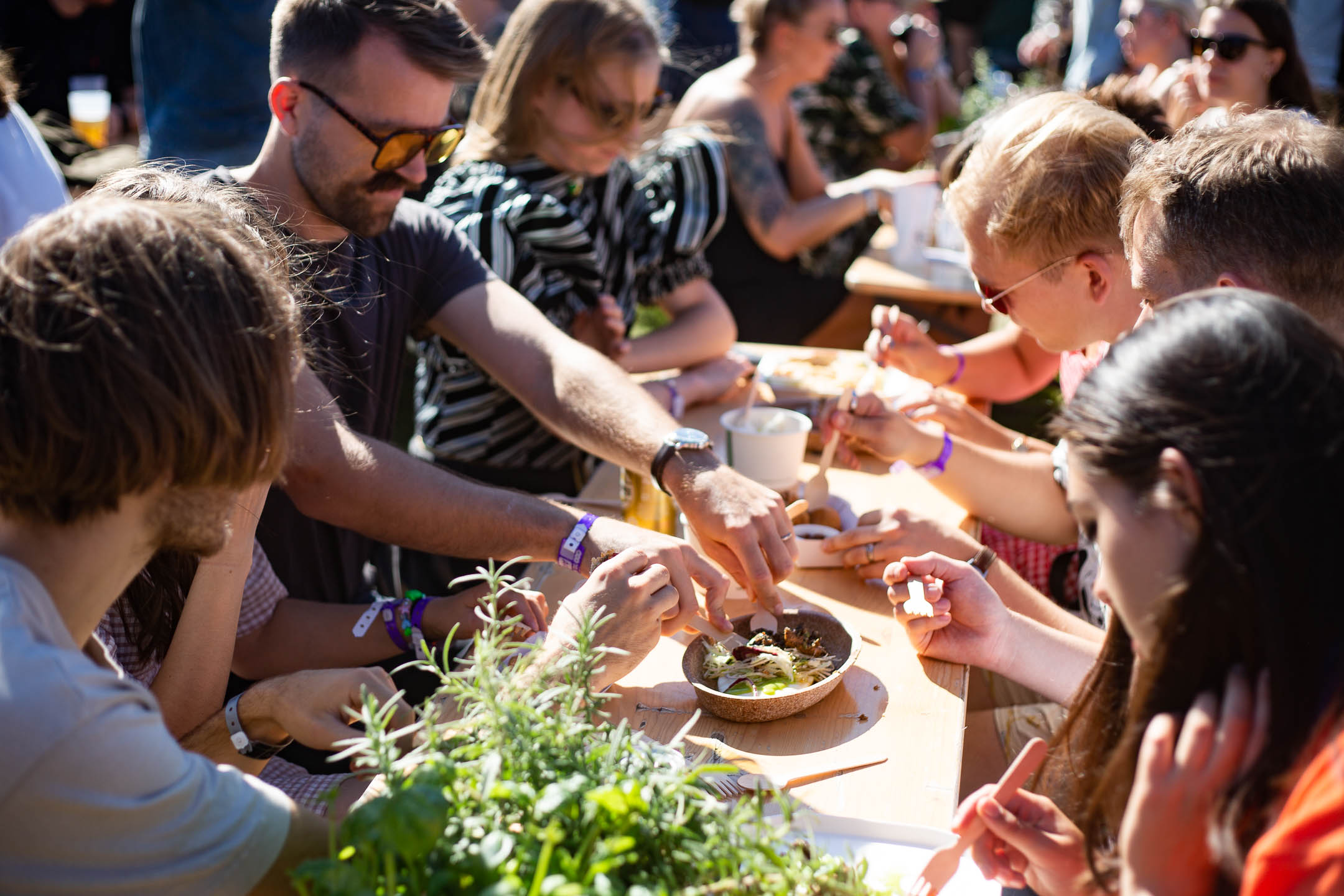
Lower food & drink impacts by changing the behavior of the crowd
This article was originally published via Green Deal Circular Festivals and can be found here.
Festivals have the power to design their own food systems and influence what’s on the menu, poured from the tap, pricing, promotion, and the engagement of their audiences. How can we reduce the impact of food and drinks through communication and behavioral change?
Low-impact dishes
Before we dive into the two different routes to environmental impacts from food & drinks, let’s have a clear vision of what ‘a low-impact dish’ is. Today, an average dish has a carbon footprint of 1.7 kg CO2e in the UK. According to the WWF, we need to get this number down below 0.5 kg CO2e to reach the goals defined in the Paris Agreement. This aligns with the ultimate goal of the Green Deal Circular Festivals where the average carbon emission of all dishes served at the festival are within the limits of 0.5 kg CO2e. Parallel to reducing the carbon emissions the EU has a 25% target regarding organic farmland in 2030. The ultimate goal in the Green Deal Circular Festivals is working towards a menu of 100% organic food & drinks.
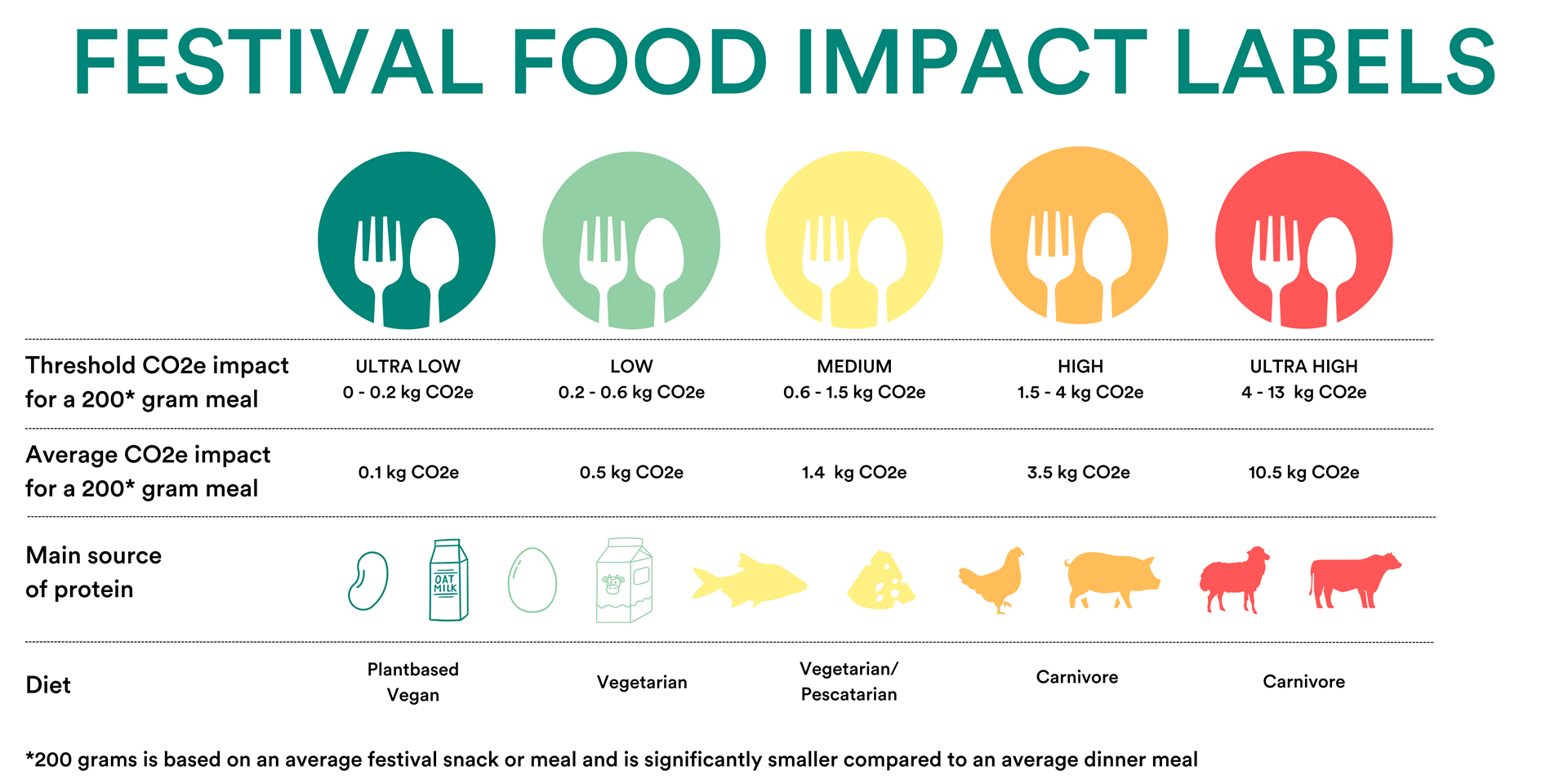
Roughly there are two routes to change the impact on the climate and biodiversity of your food & drinks:
- System change: transforming the temporary food system at your festival into a sustainable one. All choices are sustainable choices. No nudging or behavioral change is needed because no unsustainable choices are available.
- Behaviour change: influencing the audience’s behavior regarding choosing sustainable options and habits through pricing, engagement, storytelling, education, information, and incentives.
System change examples
Examples of changing the food system into low impact & sustainable choices:
- Meat and Fish Free + plant-based milk only – Shambala Festival (UK)
- No mass-scale beverage – Shambala Festival (UK) & Boom (PT)
- Vegetarian & an average of 0.42 kgCO2 per meal – Paradise City (BE)
- 1,5 million meals for 94,5% organic certified – Roskilde Festival (DK)
- 100% Organic certified food with 1,5 million visitors – Tollwood Festival (DE)
- 100% vegan – Department Festival (SE)
- Vegetarian and an average of 0.38 kgCO2 per meal – Way Out West (SE)
- Beyond Meat becomes an official partner of Apenkooi Events for plant-based food courts DGTL (NL)
- How festival Northside got Plant Based – Northside (DK)
Don’t you have the power to go all the way plant-based, vegetarian, and/or organic-certified? A change of behavior is the long-haul route, but good results can also be achieved when you apply one or mor of the following tools, tips, examples, and ways of approaching your challenges.
Behavioral change and our brain
To influence behavior change it’s important to understand our human brain. Our red reptile brain evolved in millions of years and is subconscious and at the present. It thrives & acts for direct gains. Our ‘new’ green human brain is conscious, rational and can think long-term using imaginative skills, even centuries ahead. Both brain systems influence our behavior but 95% or more is managed by the red old reptile brain. Most communication is perceived through our green brain. New behavior takes at least 30 times repetition.

The three basic regions of the brain: are the Neocortex (Green Brain), the Limbic System (Yellow Brain), and the Brain Stem (Red Brain). Source
| Comm Tools to use for the Red brain | Comm Tools to use for the Green brain |
| Default choice | Knowledge |
| Pricing/incentive | Information and long-term understanding |
| Fast solution | Inspiring and transcending |
Examples of knowledge, information & inspiration
Share an Online Cookbook
Into the Great Wide Open created a digital cookbook with planet-proof recipes from their caterers. The recipes are included with the Klimato climate labels to make home chefs aware of the environmental impact.
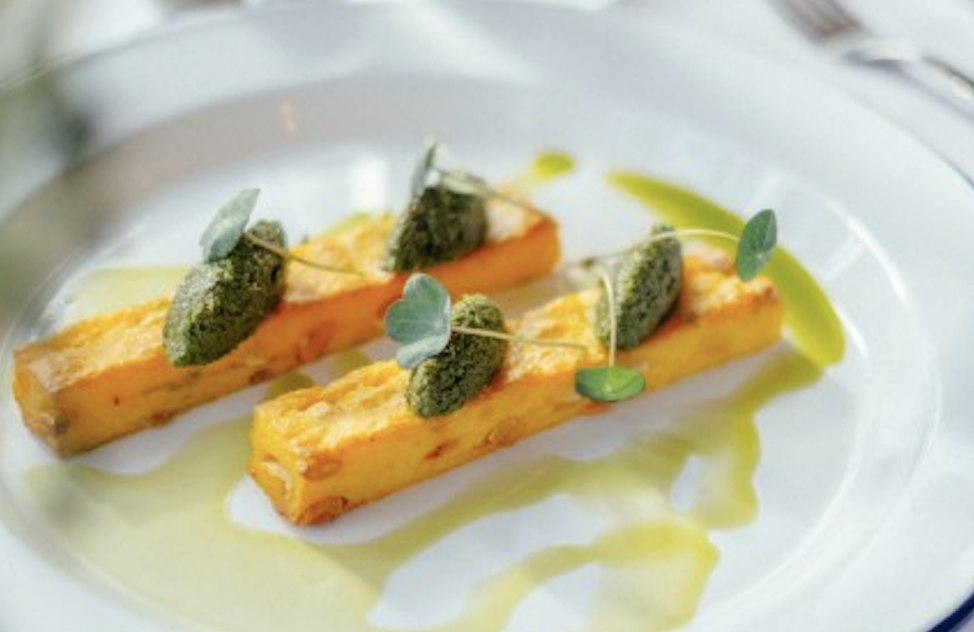
Organize Food Trader Awards
Shambala’s sustainability standards are sky-high – so trading with them is no mean feat! Their traders must delve deep into procurement, packaging, energy and ethics. Shambala’s annual Trader Awards are a way to recognize the amazing advancements made by food traders.
Communicate Climate Labelling
At Georgies, (NL) Komm Schon Alter (NL) and Oya (NO) Klimato’s climate labels were used on the festival menu to inform their audience about the climate impact of each menu option. Also, Roskilde experimented with impact labelling in 2018 together with CarbonCloud.
Start an Action Group
The cultural festival Tollwood (DE) started a local action group “As Nature Made Them” and “Bio fur Kinder” together with artists and leading figures of the urban community and active organizations to pledge for organic certified food, taking into account species-appropriate keeping.
Shoot a docu
DGTL made a short documentary about their food approach and partnership with Beyond Meat in 2022. With this initiative, they save 73% of CO2 emissions. Besides the fact that the dishes are vegan, they are also organic and locally sourced as much as possible. Everything is done to prevent food waste.
Offer a Regenerative Diner
Blijdorp Festival Rotterdam organized a regenerative diner in restaurant style together with local chef Pepijn Schmeink, a pioneer in regenerative catering in Rotterdam
From head to tail
Almost a decade ago the festival Welcome to the Village bought one local cow (dutch only). Cow Janneke, which was slaughtered locally and filled 1.400 festival dishes with her meat. A framed picture of the cow was visible at the food counters to make visitors aware of the origin of their dish.
When a visitor is receptive to your message (knowledge, information, inspiration) it could influence their behavior at a later moment. Unfortunately, humans act differently on the spot than intended beforehand, also known as the intention-action gap. Therefore we recommend embedding tools from both brain systems. Also, alcohol and drugs disconnect the two brain systems temporarily, which means the tools for the red brain are the only ones you have left for audiences drinking alcohol and using drugs during your festival.
Examples of default choice, incentive and fast solutions
Make the sustainable option the Default Choice
Its all in the name: how to boos the sales of plant-based menu items? Don’t use the word plant-based, vegan or vegetarian. A very small minority of people define themselves as vegan or vegetarian. By using these terms you exclude a huge group of people.
At Dutch Chili Fest they put this into practice and boosted their sales of plant-based burgers from 4% in 2023 to 46% 2024. How?
- Making the plant-based burger the default burger on top of the menu
- Not using the word plant-based in the menu, only a small vegan icon behind the text
- Offering a high-quality plant-based burger for the same price as a meat burger by collaborating with Redefine Meat
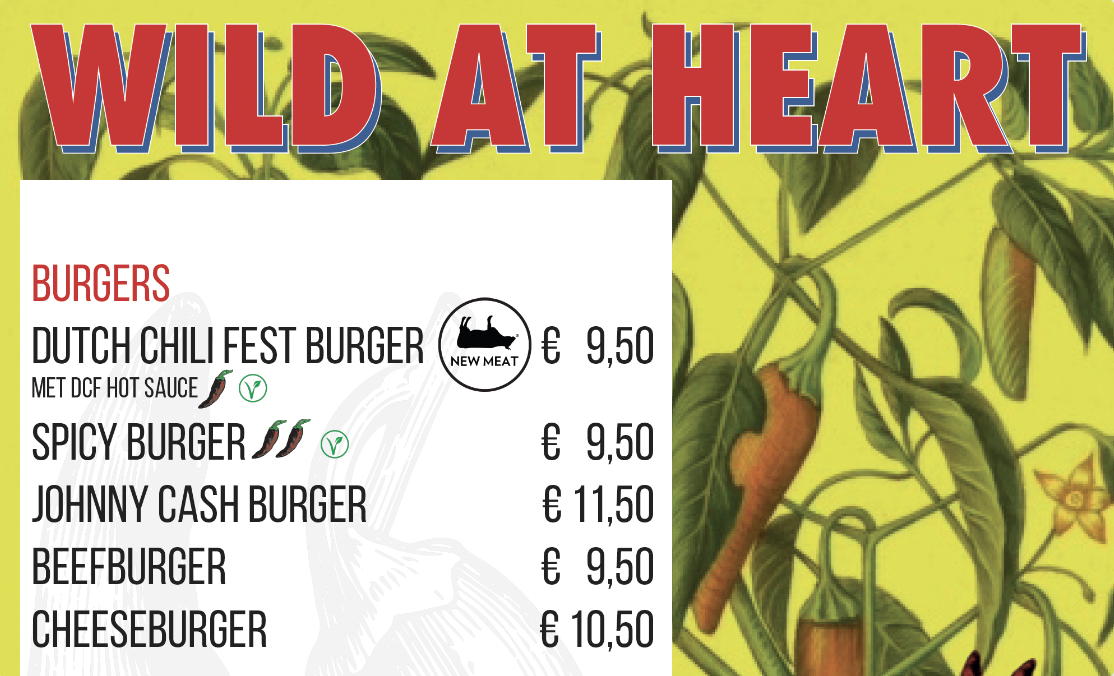
Low & True Pricing
Pricing is tapping into our red-brain system. And therefore an important driver for influencing choices at the moment of sales. A national example is Burger King Germany. They have announced that it will be making plant-based meals cheaper than meat to encourage more customers to try them. Also, Ikea offers the Plant-hot-dog for a lower price compared to the meat version. All Starbucks in Germany, France and the UK don’t charge extra for plant-based milk surcharge. Interesting fact, in the UK Starbucks changed this after a stunt in 2021 that claimed Starbucks dropped its vegan milk surcharge organized by Switch4Good a nonprofit founded by Olympian Dotsie Bausch and The Yes Men, a group that engages in hijinks to encourage often difficult conversations around real problems.
Another approach is True Pricing. In The Netherlands the large caterer Vermaat is researching the influence of communicating the True price, meaning adding environmental costs for water use, water pollution, land use, air pollution, poverty and child labour to the standard price. Companies can calculate these social and environmental costs using the True Price method. By including the extra costs in the price, a fairer system is created, and sustainable production becomes the norm.
Fast Solution
At most events sustainable, plant-based or regenerative dishes are treated as a niche, given a space on the festival a bit behind. Turn this around by making the heavy-impact (red-meat) caterer a niche somewhere a bit more hidden away from the main routing and give an A location to a plant-based or low-impact caterer who knows how to serve fast in pace and a high number of dishes.
Shortcut from our green to the red brain
Smart communication is processed by the green brain really fast and directed to the red brain. Examples are commitment, confirmation to the group, example behaviour, reciprocity (give something and the red brain wants to do something back for you) and scarcity. Do you want to deep dive into this theory, we can recommend this book: Influence: The Psychology of Persuasion from Roberrt B. Cialdini.
The research project done by Climate Outreach and its partners supports this theory. Authenticity matters in communications, including when talking about food. What we eat is intertwined with fond memories of family dinners, childhood, and friendships. For some, food connects us to our heritage and cultural background. The most trusted ambassadors for changing diets in this project were other participants—not celebrities or ‘experts’. Read more about this project here.
Next steps
To create impact follow the steps in this order:
- Apply system change tools and choose for 85% – 100% :
- Plant-based
- Organic
- Local
- Apply the red tools:
- Rename dishes (remove plant-based, vegaterian, vegan from your vocabulary)
- Change the order on your menu (low impact on top)
- Eliminate or reduce high-impact dishes (location, high pricing, exclusive)
- (True)pricing (low-impact meals are cheaper)
- Apply the green tools
- Communicate Climate labels
- Storytelling
- Workshops/talks
- Regenerative/pioneering/innovative Diners and tastings
Do you want to add a festival example to this article or do you have any comments or suggestions please contact lyke@greenevents.nl.


